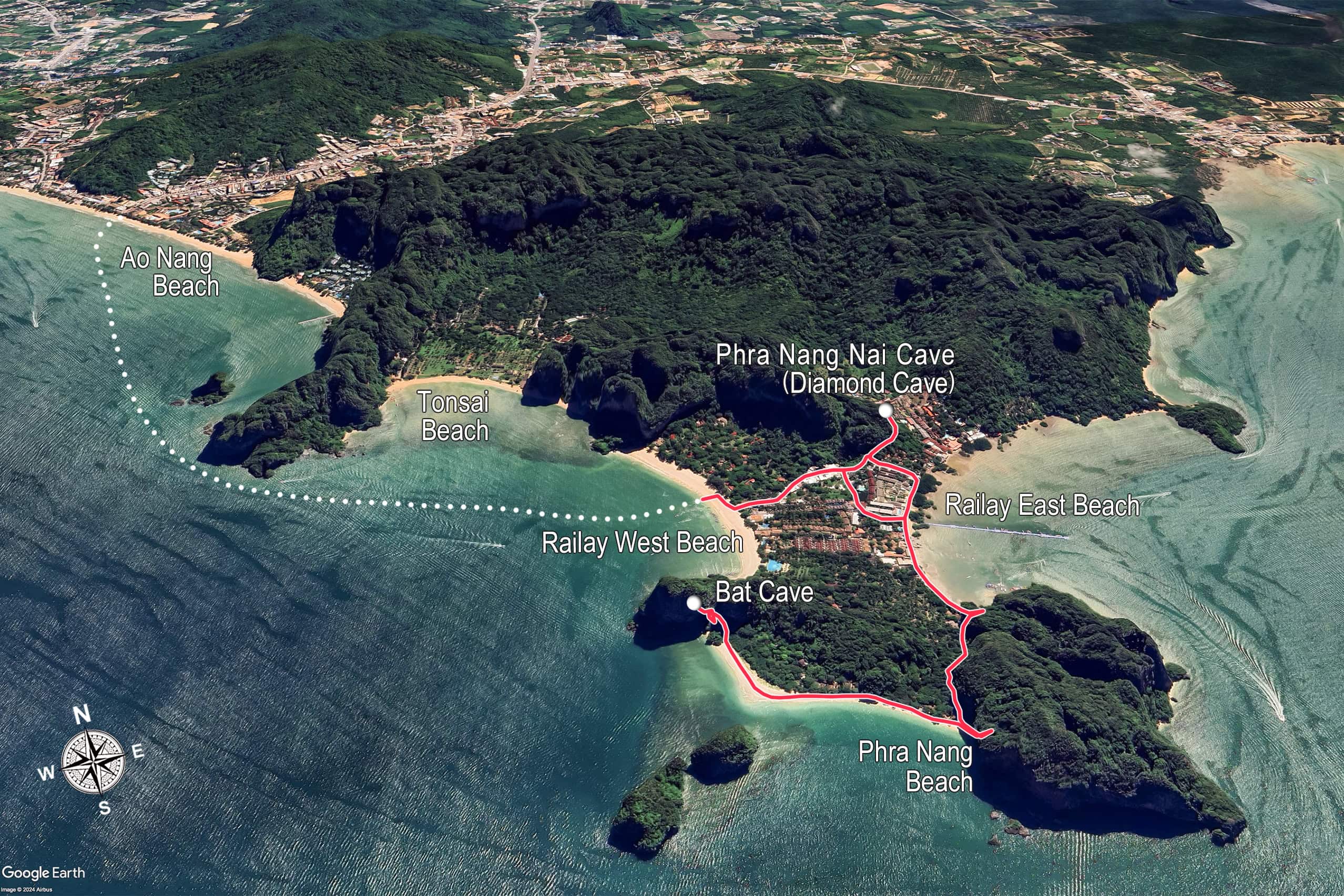
At the end of our time at Krabi Ao-Nang Beach in Thailand, we visited Railay Beach.
Railay Beach is located at the neck of a small bay called Railay Bay. The small area is isolated from other parts of Krabi by the high limestone cliff walls and has no ground access. The only way to access there is from the sea, and long-tail boats and speed boats frequently transport visitors like us from other nearby beaches throughout the day.

From Ao-Nang Beach, Railay “West” Beach — there are west and east beaches in Railay — is a quick 15-minute boat ride away. A round-trip ticket for a long-tail boat is 200 TBH per person.
We left our hotel early, right after breakfast, to be ahead of the big wave of other people who were going to Railay Beach from the Ao-Nang area.


There was no line at the ticketing box, and we could get our tickets immediately.
Although we had no idea which boat was ours, a Thai guy approached us as soon as we went down to the beach and took one of our tickets. Then he looked around a line of boats and pointed to one that had a few other people already on board. We were lucky to catch the boat before it started moving; otherwise, we would have needed to wait a while until there were enough passengers for another boat to come.



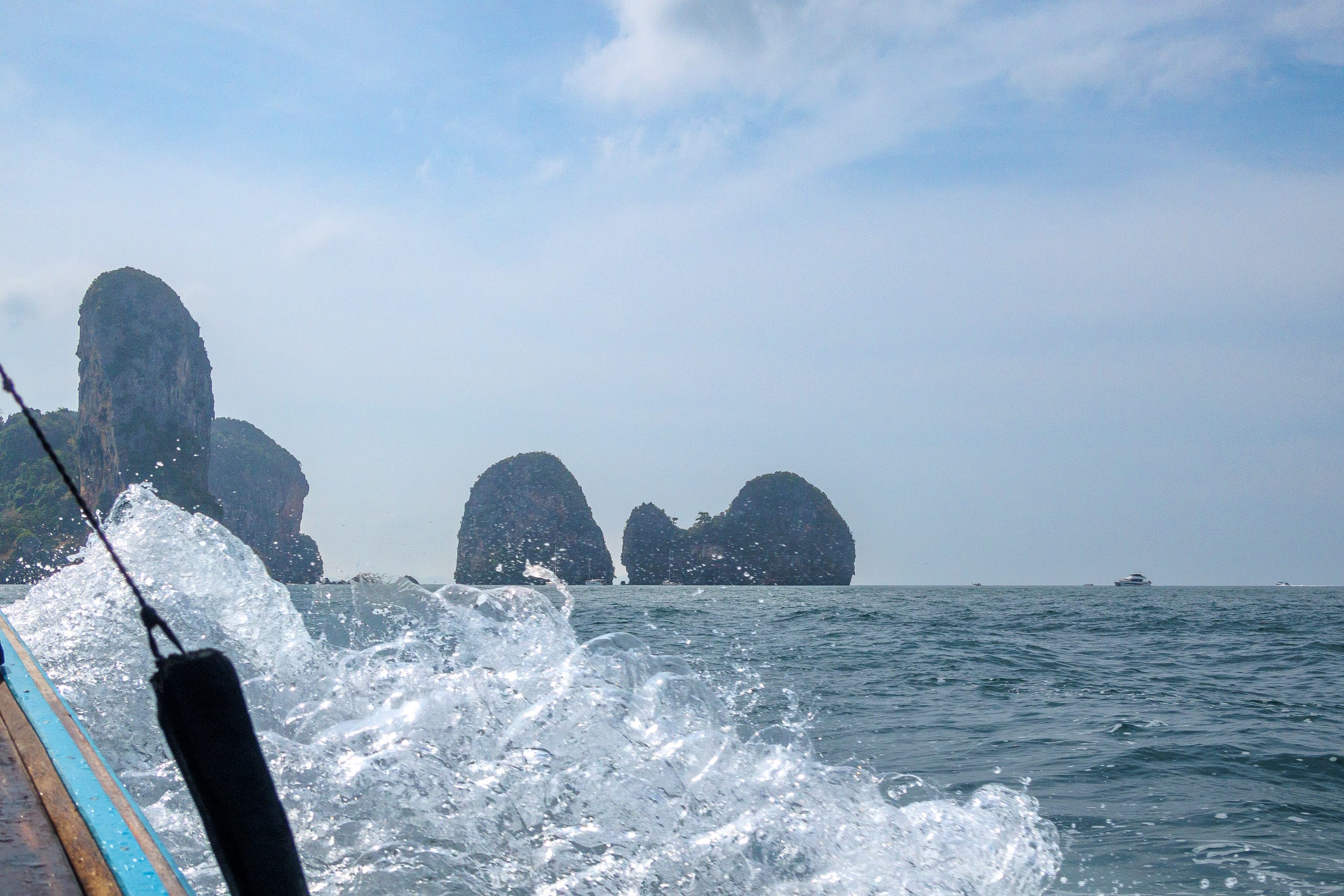
We arrived at Railay West Beach at 9:45 a.m., so it was still quiet, and most shops and cafes were preparing to open.
We didn’t bring any water or food on the assumption that we could buy them in Railay. We were a bit too early, though. After we unsuccessfully found any shop on the main street, where many bars and restaurants stood on both sides, we spotted a small shop on the East beach and bought a pretty expensive bottle of water.
In the end, we didn’t really need to drink water this time, but you never know how hot it could become and how far it would be to the next water resource.



Just like we expected, most people came to Railay to swim in very calm and stunningly clear turquoise green sea water and relax on the extremely fine powder sand beaches. Aside from them, climbing limestone cliffs seemed a popular activity here too. We passed some climbing shops on the main street, so all levels of climbers could come without bringing their own gear. Surprisingly, many people were already on and around the vertical limestone cliffs while local guides assisted and gave instructions to them.

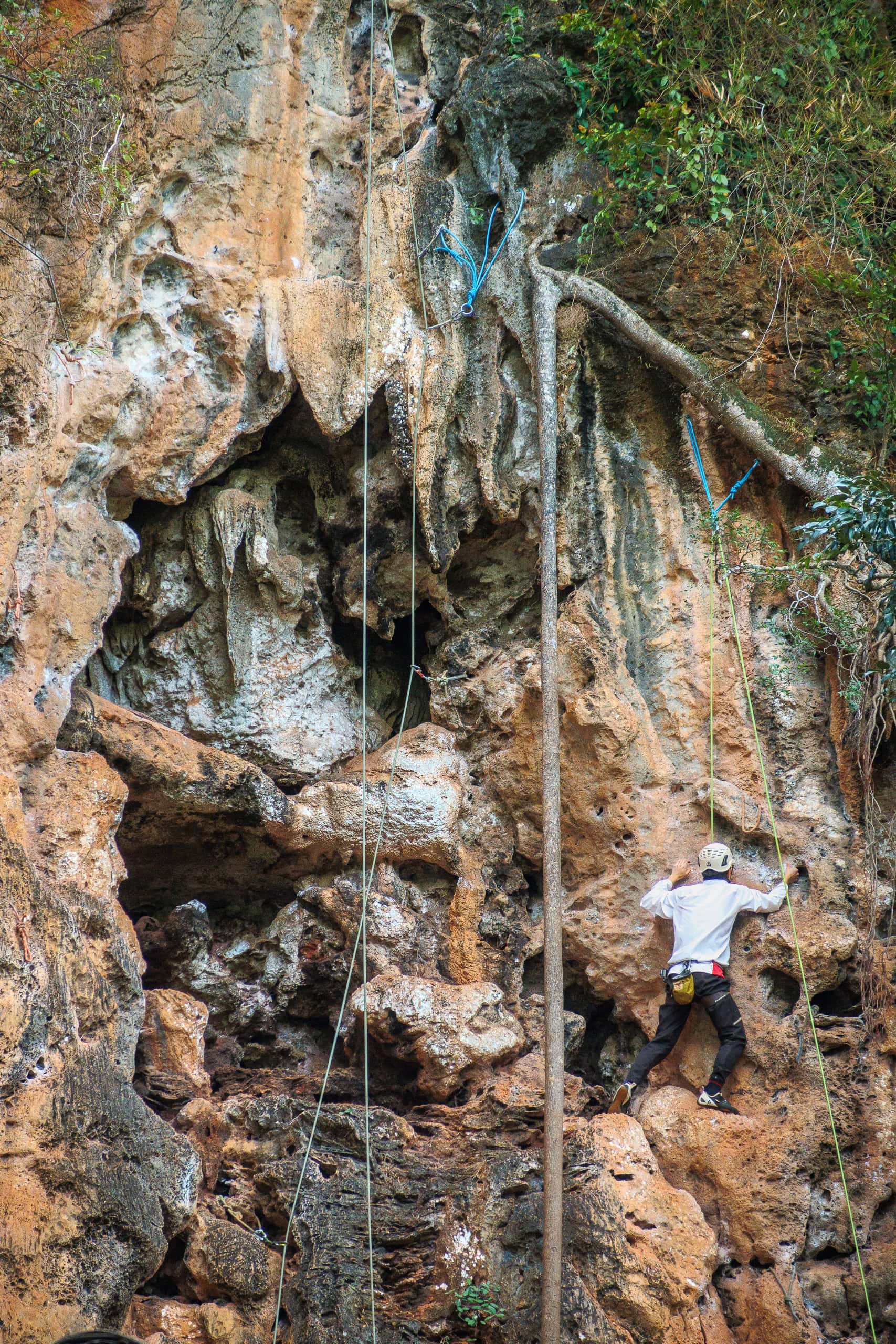
Although climbing on the cliffs looked fun, it was not the reason for us to come to Railay. We were here for a couple of caves.
Our first destination was the Bat Cave.
It was supposed to be inside the significantly high limestone cliff we saw at the edge of Railay West Beach, but regular people without proper climbing skills and gear could not approach the cave from that side. To reach the cave, we needed to walk all around to Phra Nang Beach on the other side of the cliff.

Phra Nang Beach is the most popular beach in Railay. As it is entirely a swimming beach, no boats are allowed to come nearby. That is why, as mentioned before, the long-tail boats from Ao-Nang Beach generally travel only between Railay West Beach.

After walking through the still quiet early morning main street, we came out to the East Beach.
Railay East Beach has a floating boat deck for visitors from downtown Krabi. Most hotels in Railay stood on this side of the cape, and crowds of mangroves, standing in the water, shielded almost entire shorelines from possible wild waves.




We simply followed all the people heading in the same direction on a wave-washed, narrow path. The tip of the Railay Cape is a gigantic limestone rock mountain.



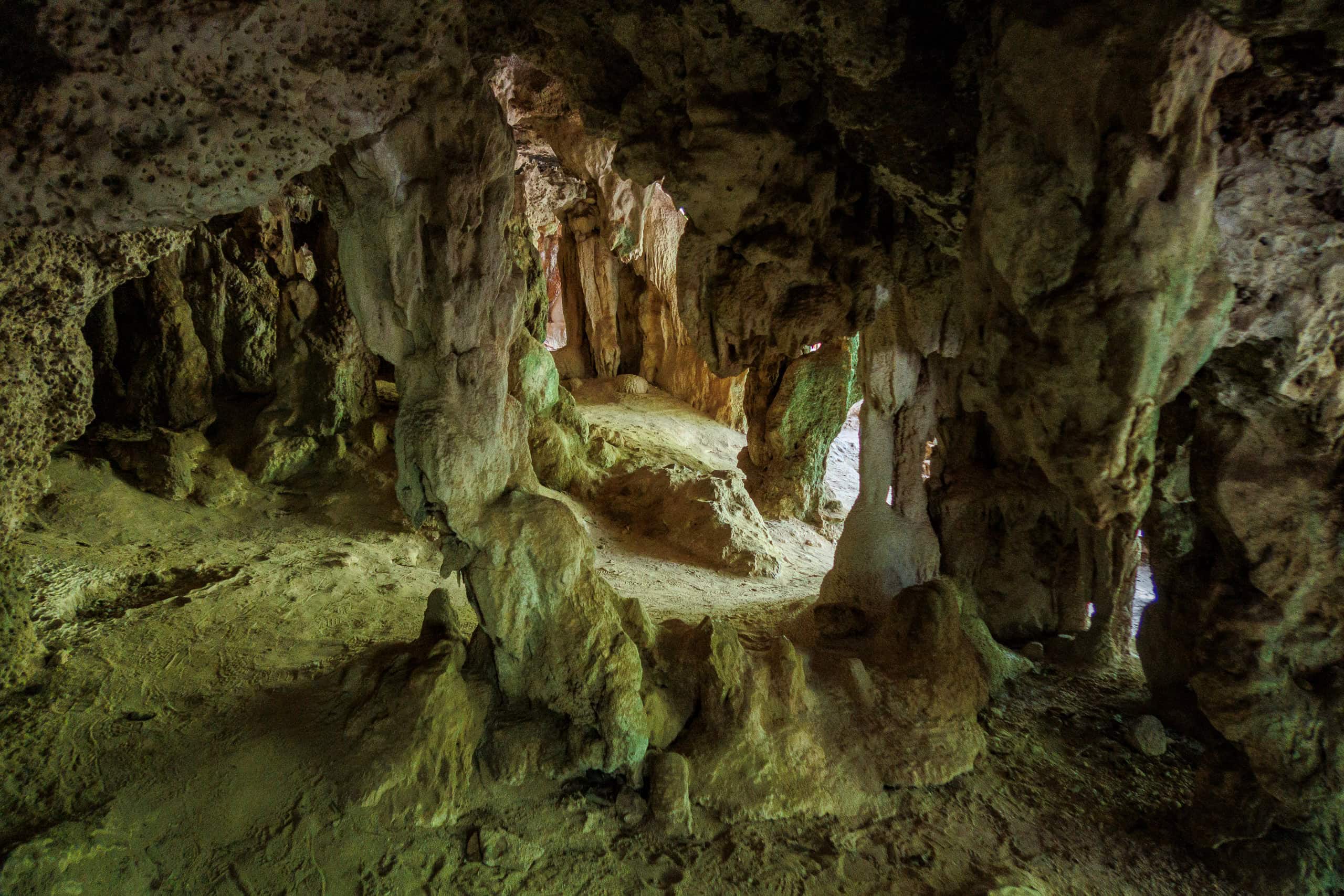

While we were walking on a path under various shapes of old stalactites around the bottom of the mountain to Phara Nang Beach, we saw a few people struggling down a very steep side trail connecting to our path. Apparently, there is a hidden lagoon in the middle of the rock mountain.
Very beautiful blue lagoon — as long as it has water. At this time, late Mach, Thailand was in a dry season, and I read the latest reviews of some people who actually went to the lagoon quite recently, saying it was dried. So, we skipped to go explore the lagoon.
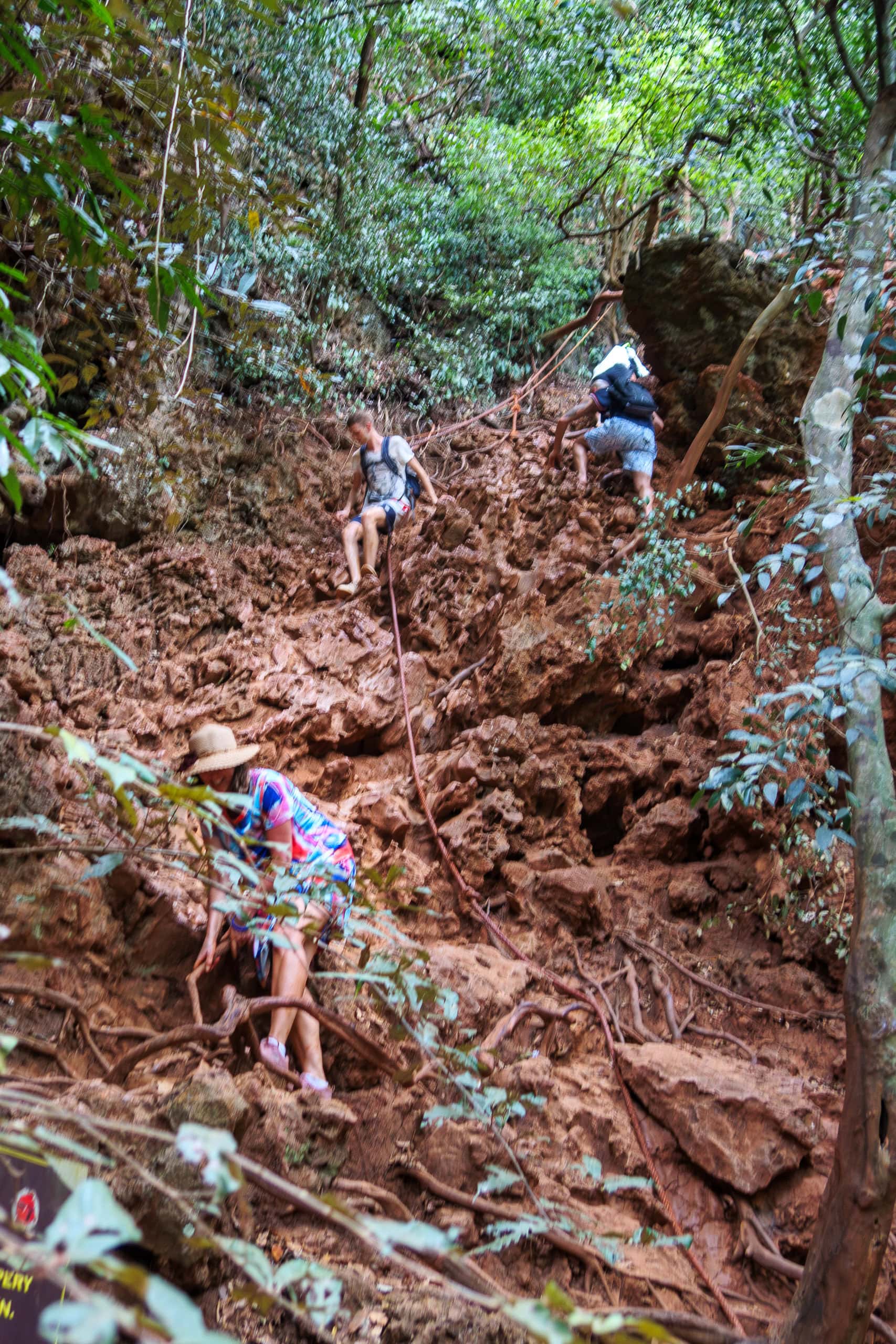




The Phra Nang Beach
Phra Nang Beach was surely popular, and surprisingly, so many people were already there. A large group of climbers gathered by a cliff wall, watching a couple of fellow climbers making an attempt to go higher. Crowds of tourists standing along the shore, happily taking photos of the very clear turquoise water and rock islands.



At one end of the beach, there were two small caves. Despite its close proximity to the crowds of tourists, it was quiet in either of the caves. Well, they certainly looked very curious and interested, giggling but hesitant to approach the caves for an obvious reason.
The caves must have been sacred places, probably shrines or something, piles of colorful, long, thick wooden sticks that resembled phalluses. Though many of them had modest appearance, some were pretty graphic and detailed shapes. People seemed to secretly check each other at the corner of their eyes who wanted to be “the brave” and enter.

Being from Japan, this was not the first time for us to see similar places like this. I am sure people all over the world must have seen some YouTube videos about the weirdest shrines, museums and festivals in Japan.
As a few local serious-looking couples were praying together for a long time there, we assumed these caves must have had something to do with fertility. A quick Googling proved us correct.

The Bat Cave
We started walking along the shore to the opposite end of the beach, where the Bat Cave cliff stands. Soon, the high-tide seawater completely covered some parts of the sand beach, and we could not keep our feet dry anymore. Thankfully, the water level was not too high, around my knee height, so people could easily walk in the water to cross the below-water parts. The beach should be entirely exposed and dry during the low tide.

When we got on and off the long-tail boat, we wore water sandals to walk a bit in the water. But we had already changed to our regular Altra trail runners and felt too lazy to take them off and put on the sandals again. So, we kept walking in the water with Altra’s shoes on.
Although Altra’s trail runners are good at pushing the water out of shoes and getting dry quickly, this was not the best decision. The sands of Phra Nang Beach were too fine, like powdered sugar, and so hard to completely get rid of from inside shoes even after we thoroughly washed and dried them later. For the next few days, the sand still came off when we turned our shoes upside down and patted them.

After passing the water-covered parts, the beach became much quieter. Reaching the near end of the beach, we found a part of the tall shrub thickets behind the beach was cut and made a small tunnel to the cliff. A very short walk took us to a steep slope trail. With the help of a thick support rope and small rocks on the slope, we clambered up quickly to the top of the slope and found a narrow but easy-to-walk path stretched further through the big rocks to a dark crevice in the rock cliff.







Passing a few rock climbers practicing their skills and some hand-made wooden ladders, we arrived at the mouth of the Bat Cave.

Inside the cave was a big hall, and its front parts were exposed to sunlight coming through many cracks and holes. Because of that, most stalactites were pretty weathered and lost their delicate forms. The surface under our feet had been smoothed out over time by wind, running water, and probably many people walking on it



The cave was fun to walk around. We explored further into a deeper area of the cave and found a dark, small hole with a knotted guiding rope attached. After making sure no dangerous animals hid in there with the flashlight of our phone, we slid into the hole.
It was a smaller room, but the ceiling was higher than Erik stood up straight. Our phone flashlights spotted a small colony of bats hanging upside down with bated breath. Or maybe they were just relaxing as they didn’t move or fly at all, even in the spotlight. I appreciated them for letting me take a good photo of them.


According to the hiking logs of the past visitors, there should have been a path through the cave to reach the Railay West Beach side’s cliff wall. In the corner of the dark bat colony room, we found a bamboo ladder leaning onto another dark hole.
Suddenly, a young Western guy only in his speedo and hiking sandals, wearing a headlight, came in from behind us, went straight to the bamboo ladder and disappeared into the dark as if it was just an everyday routine. While we were taking photos of the bats, he reappeared from the same hole again and quickly left the bat room.
Puzzled with what just happened in a very short time, we tried to sense beyond the dark hole, holding our breath. We did hear multiple human voices from somewhere distance, but we are not sure about whether they came from the hole or somewhere else.


Our original plan was to reach the Railay West Beach side’s end of the Bat Cave and then walk down to the beach, if possible. From Railay West Beach, we wanted to go further to Tonsai Beach, from which a nature path should run through forests behind two beaches in the direction of the Diamond Cave near Railay East Beach. Although we had the GPS track of the route and headlights, we had no idea if this route was an easily walkable condition for casual hikers like us. It was highly possible that the person who provided this route log on the internet was a climber.
After all, we decided not to give it a go.
We would check out the next morning, so we had to go back to our hotel in one piece and pack up. We turned around and went back to the bright side of the cave.






We simply traced back to the way we came, crossing the water, which was now lower than before, passing a monkey family posing for tourists’ photo shoots, and came back to the Railay East Beach area.
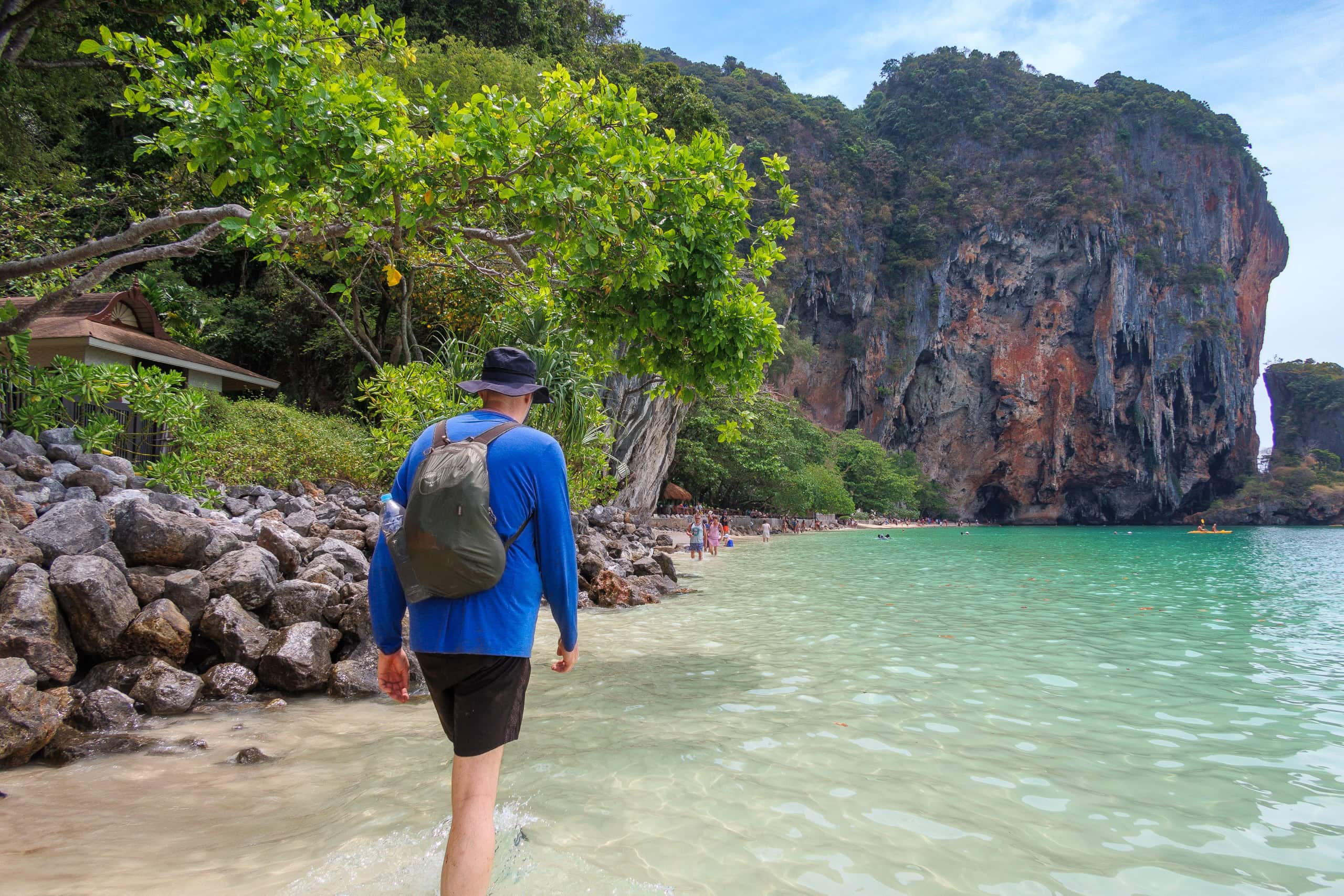



After getting refreshed with long-awaited icy cold drinks at a hotel terrace cafe, we followed signs to the Diamond Cave.


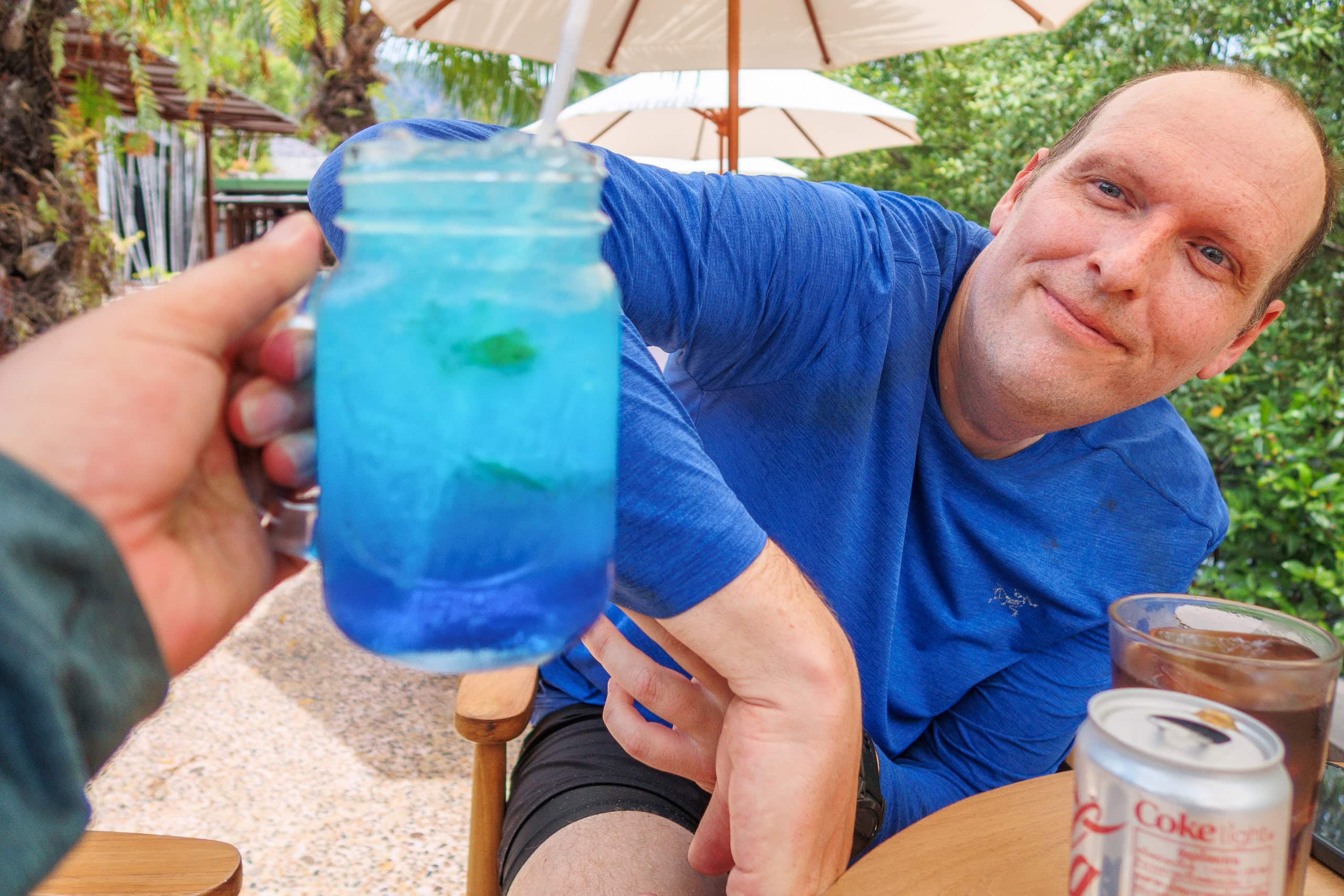

The Diamond Cave (Tham Phra Nang Nai)
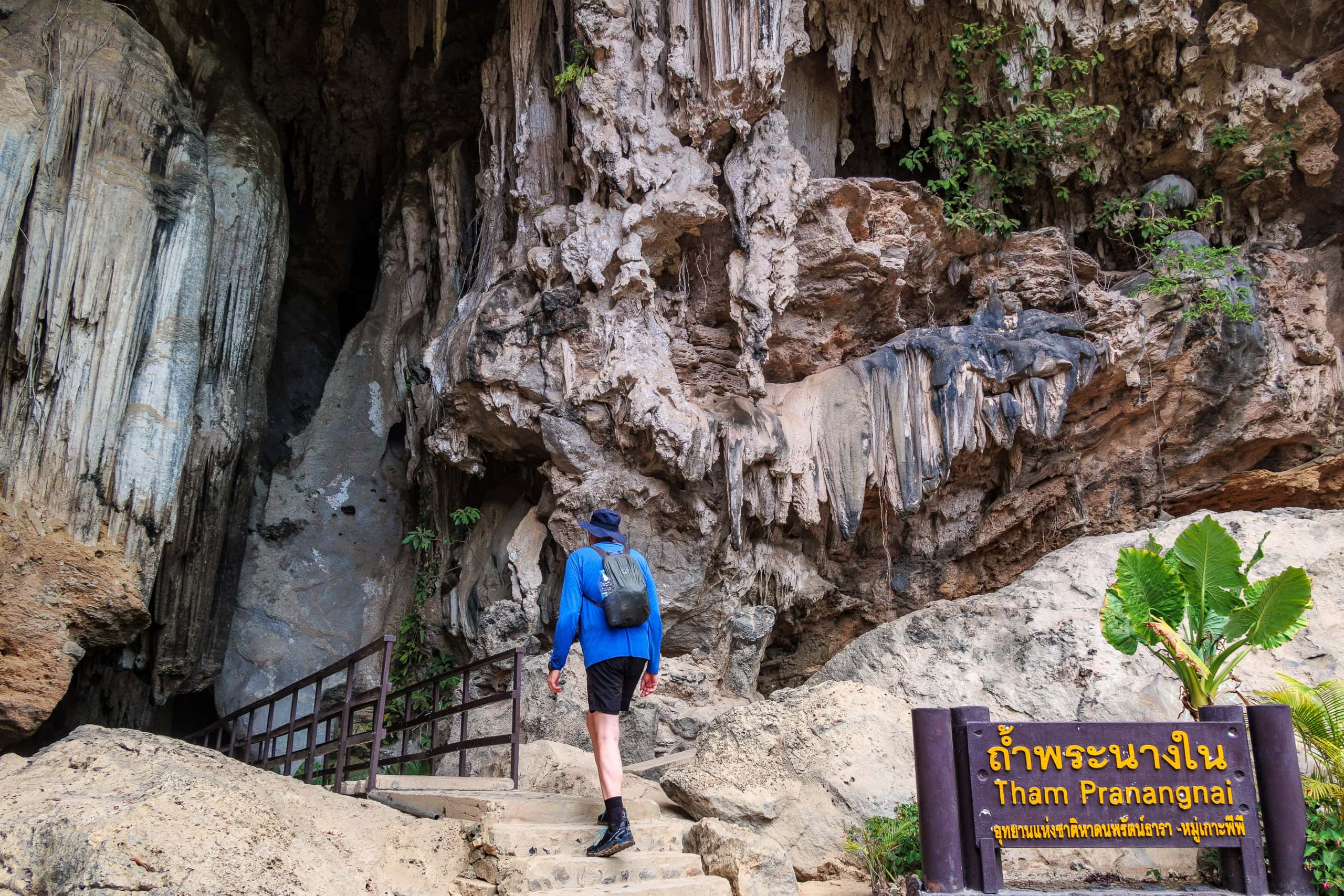
Unlike the Bat Cave, the Diamond Cave (Tham Phra Nang Nai) was a show cave with well-maintained passageways and colorfully illuminated beautiful stalactites, stalagmites, and other cave formations. We paid the entrance fee in front of the cave mouth: 200 BTH per person as of spring 2022.


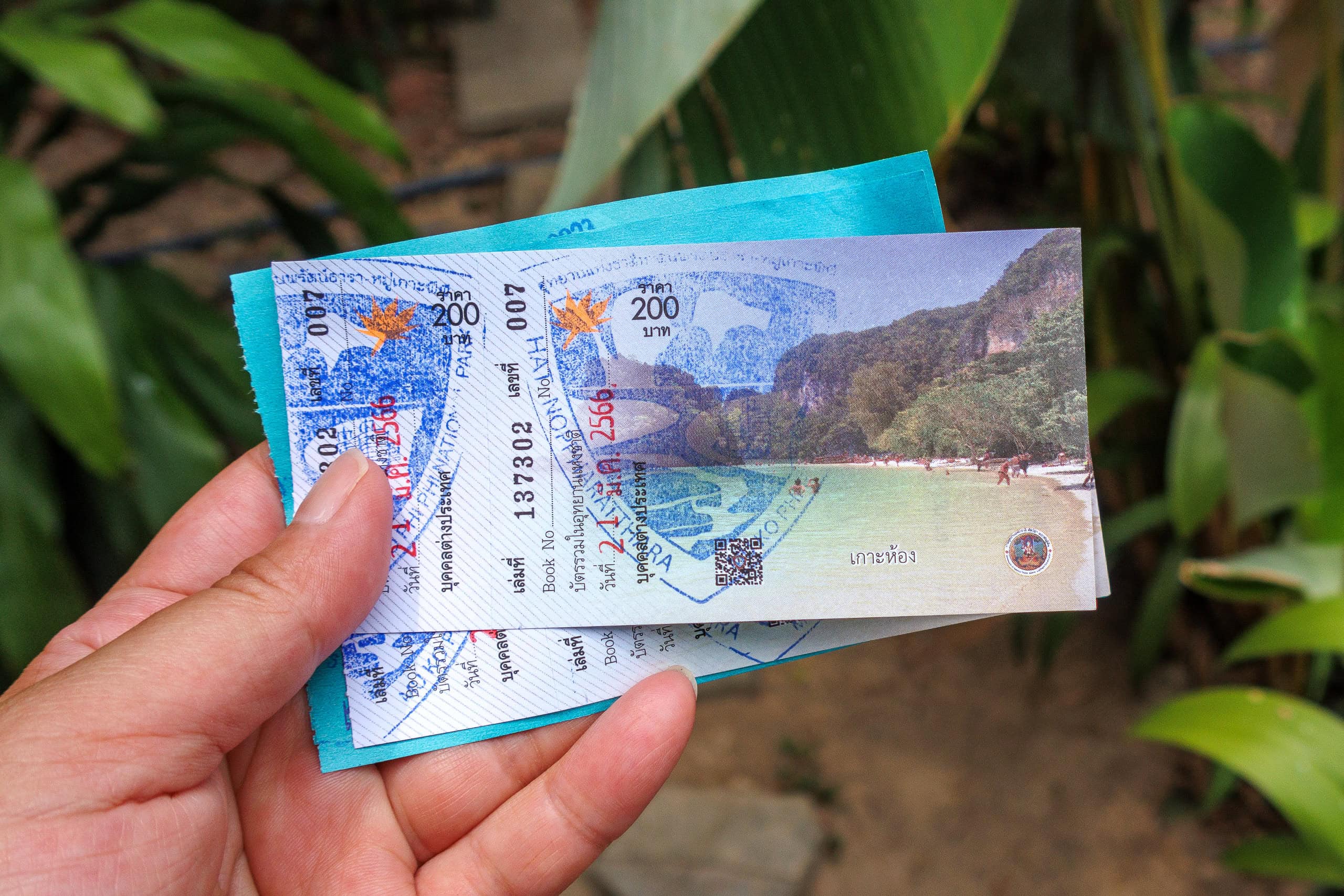

Although the size of the cave open to the public may be categorized as a smaller one of all show caves I have ever been to, taking just 10 to 15 minutes to walk around the entire route, it was definitely worth seeing. Right inside the cave mouth was a short, narrow corridor going through a big crevice that already had some eye-catching cave formations.

At the end of the crevice corridor, we entered the grand hall, where all the walls were decorated with the intricate crafts of Earth’s wonder. It looked as if thousands of jellyfish were floating around us or we were standing in the middle of waterfalls and cascades.
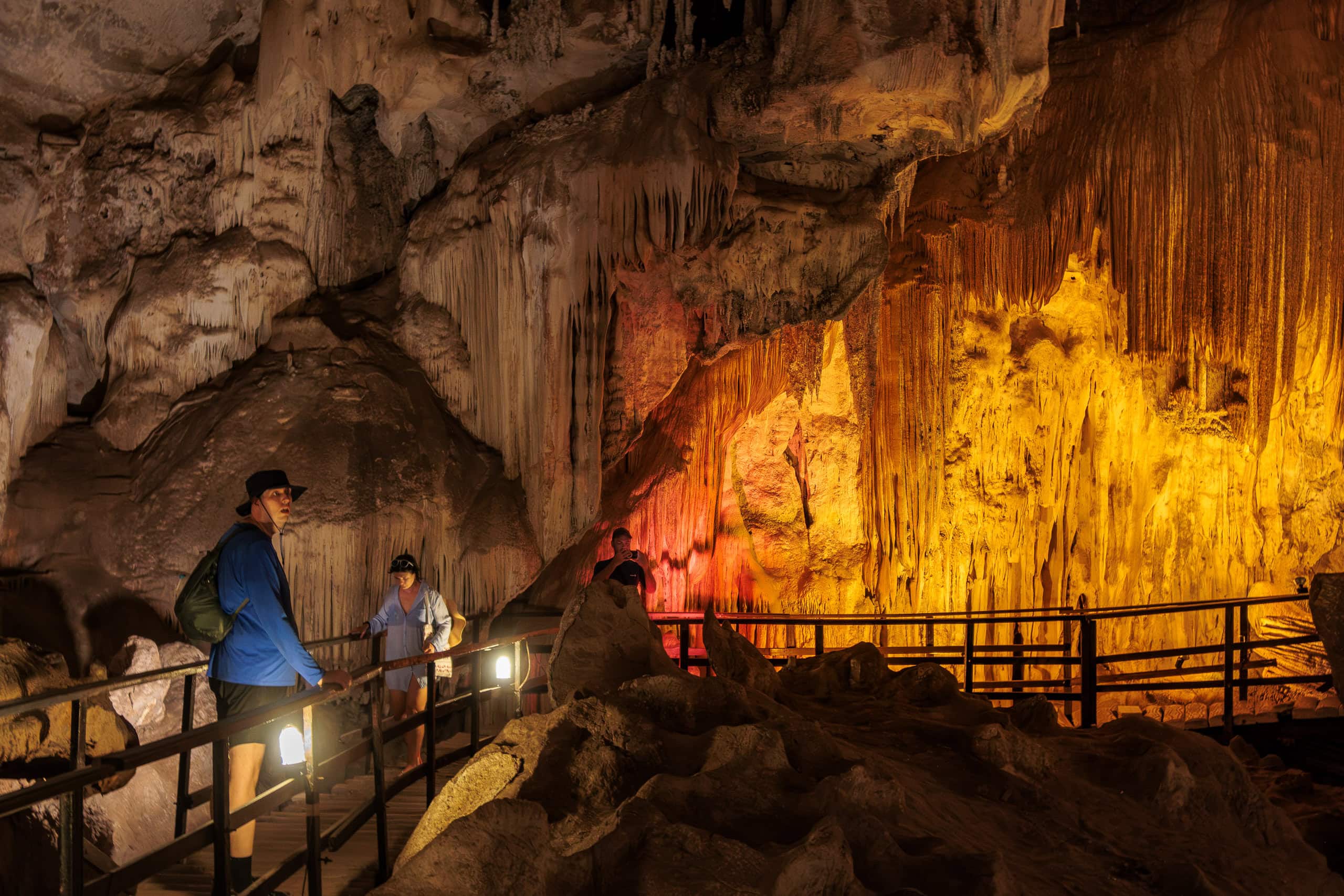
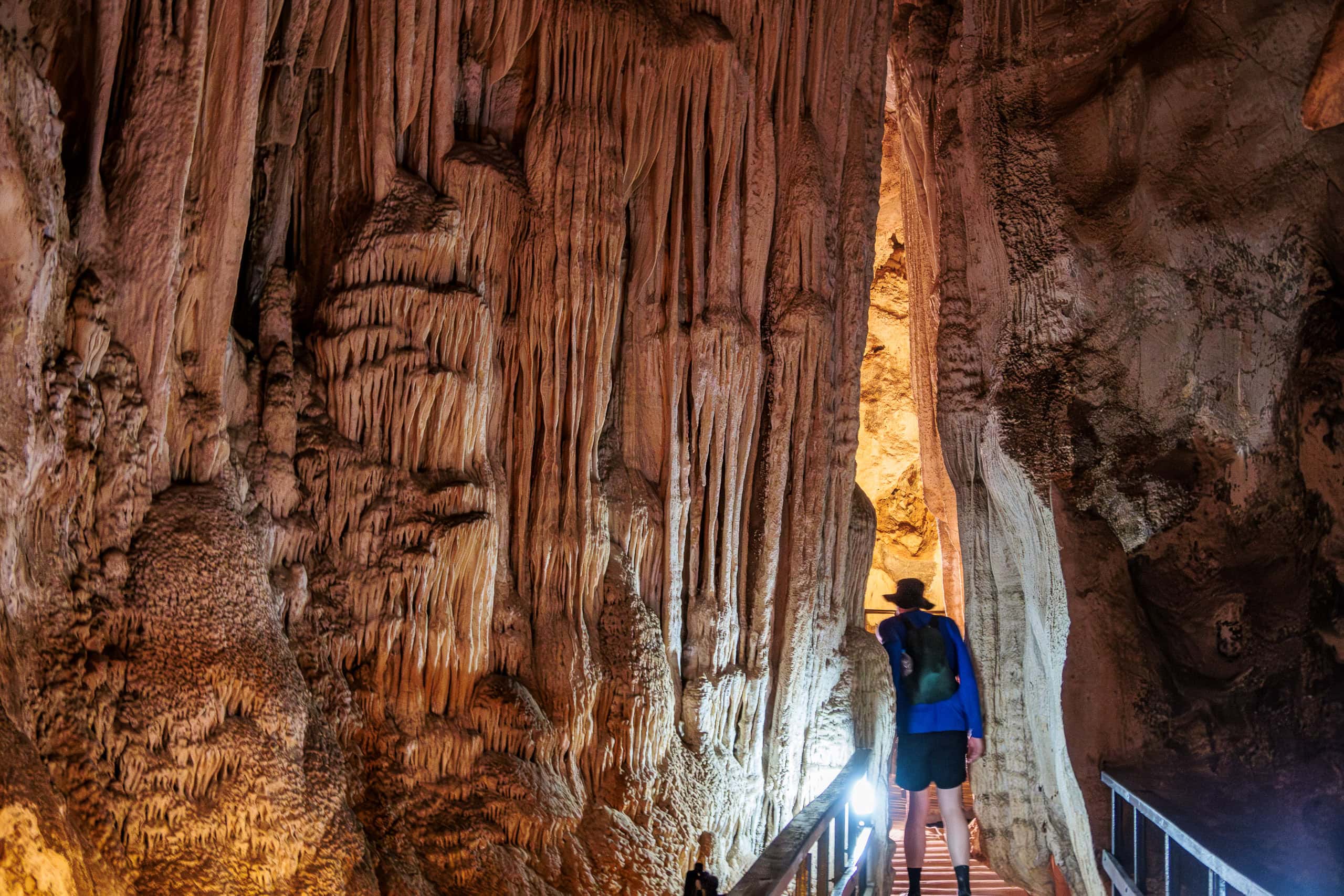
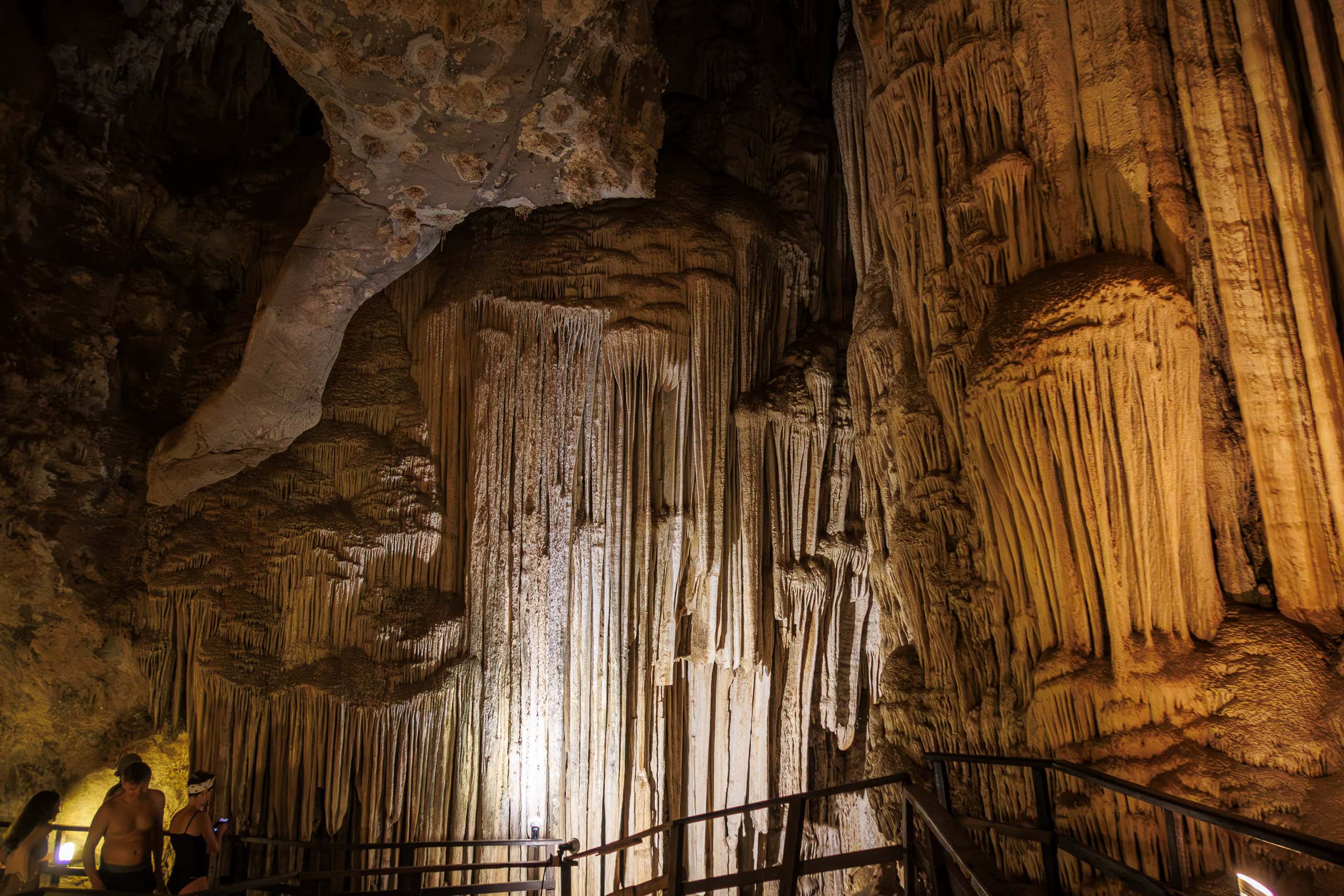
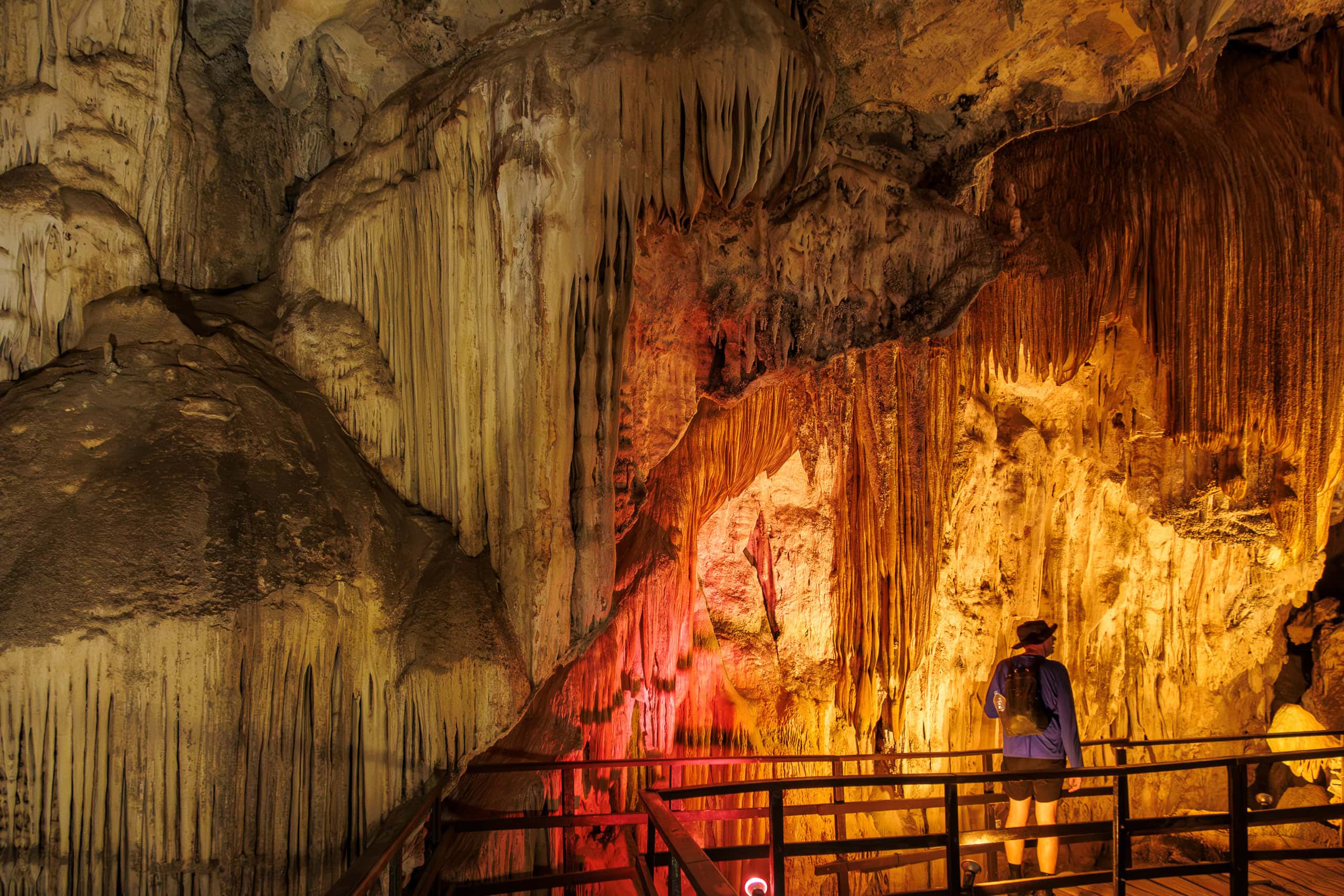

It was much more impressive than we expected, and we really enjoyed being there. The cave was only a short walk away from the Railay’s main street, so we saw a few other vacationers in the grand hall, too. All looked like they were having a good time.
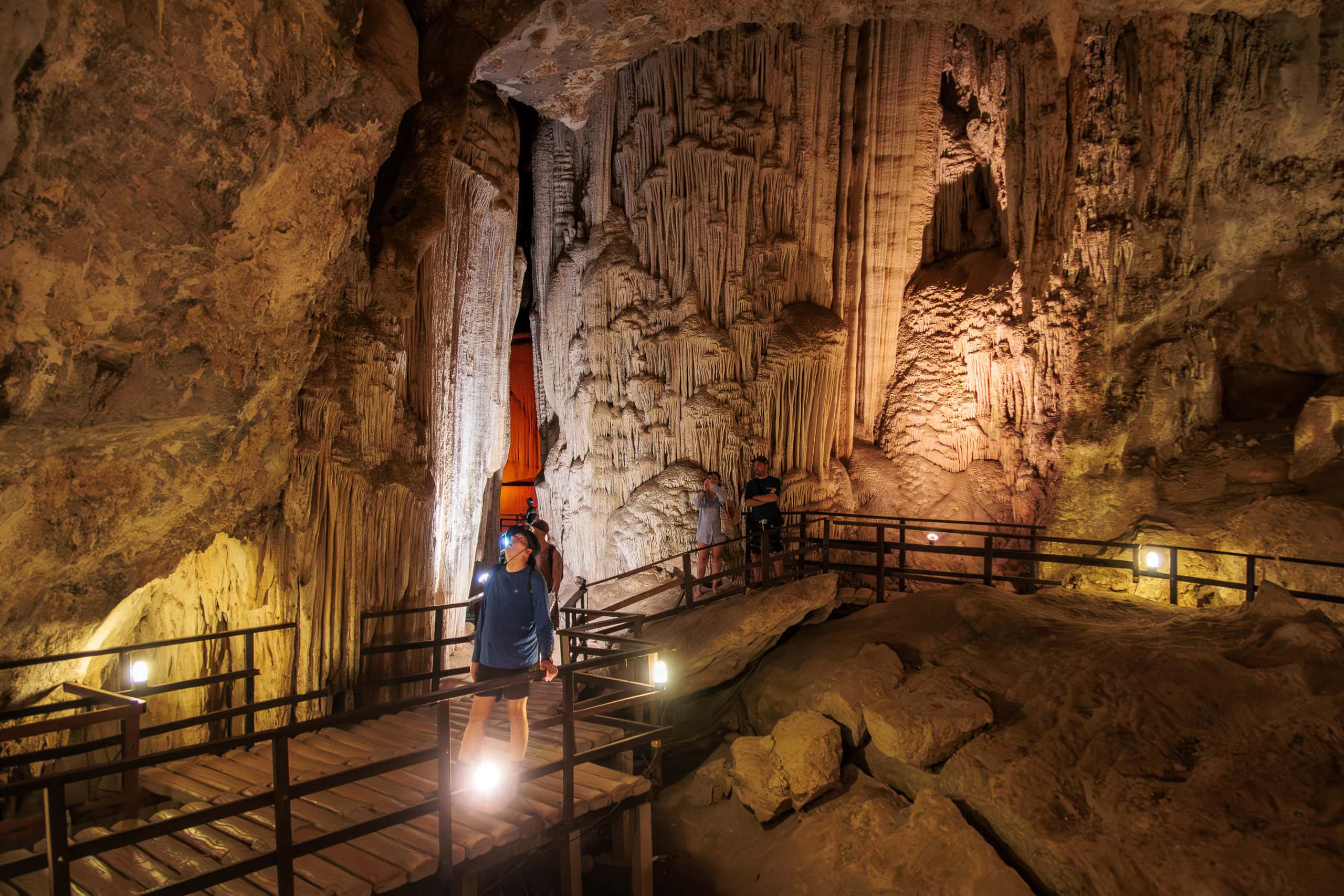

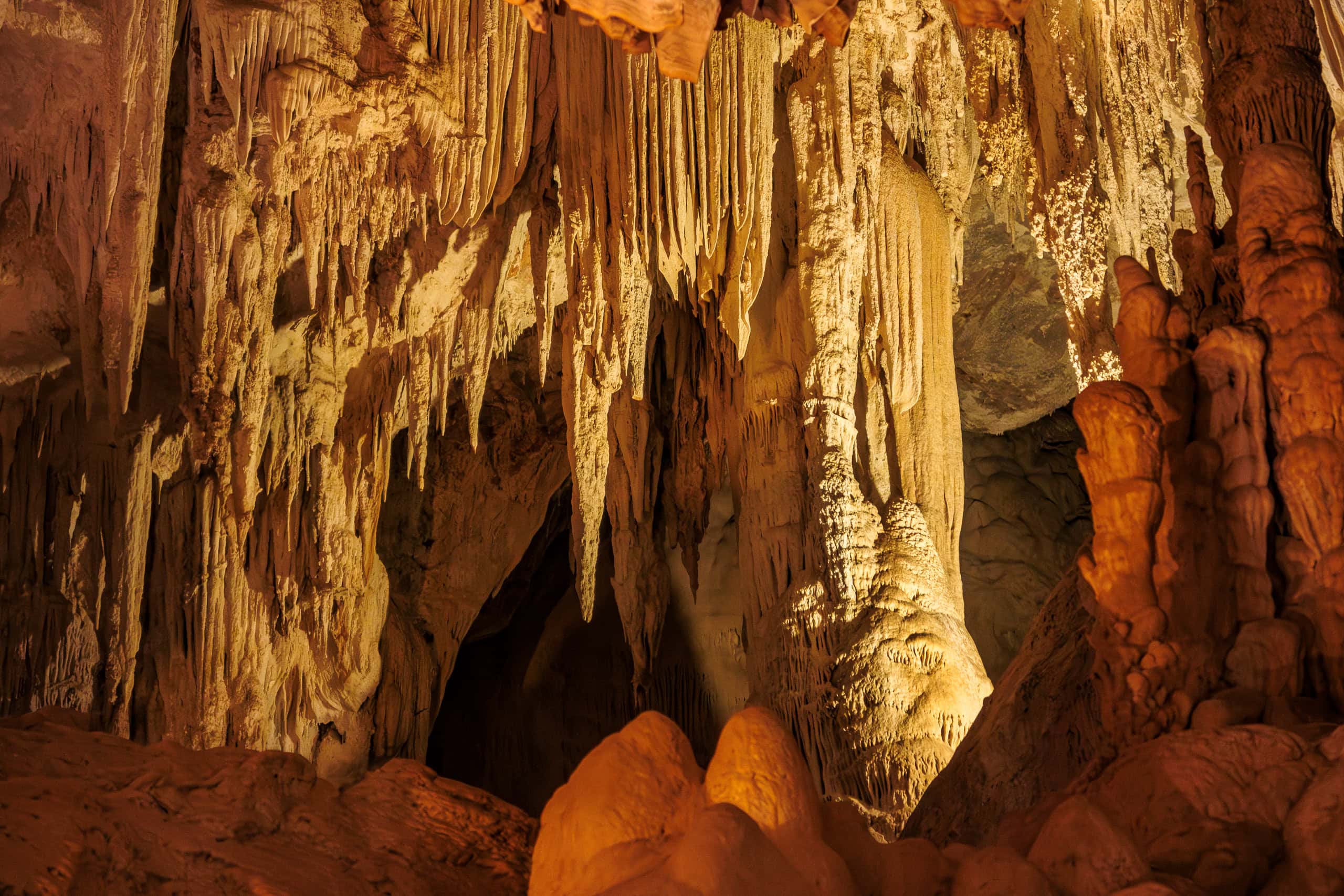

We walked back to the Railay West Beach through the more lively and busier main street. With another boat ticket we had kept in our hand, we entered the sand beach. Before long, a Thai staff came, picked up our tickets, and pointed one of the long-tail boats at the shore.



As our boat was speeding up and moving away from the Railay West Beach, more long-tail boats from Ao-Nang Beach passed us. It was merely 1 p.m., so there was still plenty of time for the people to enjoy the beautiful Railay Beaches.









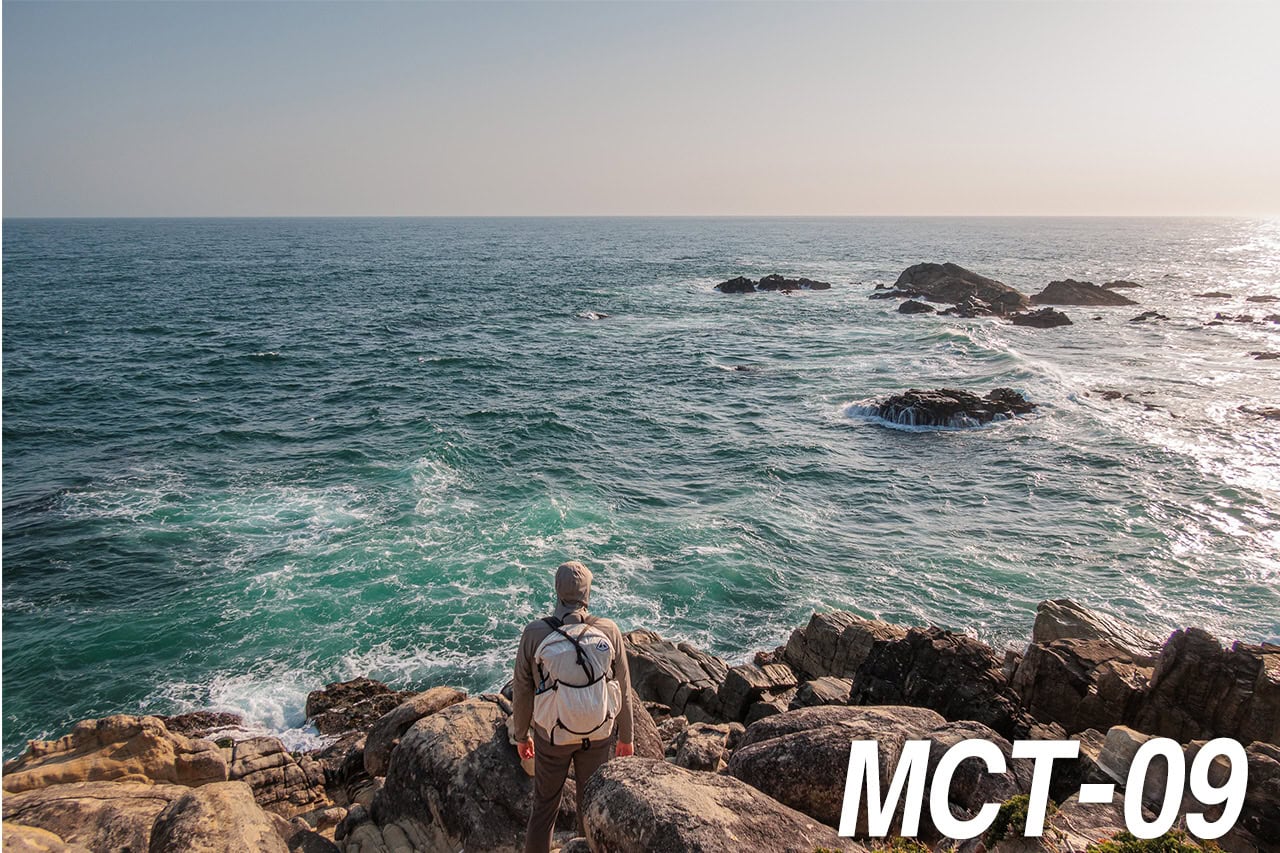
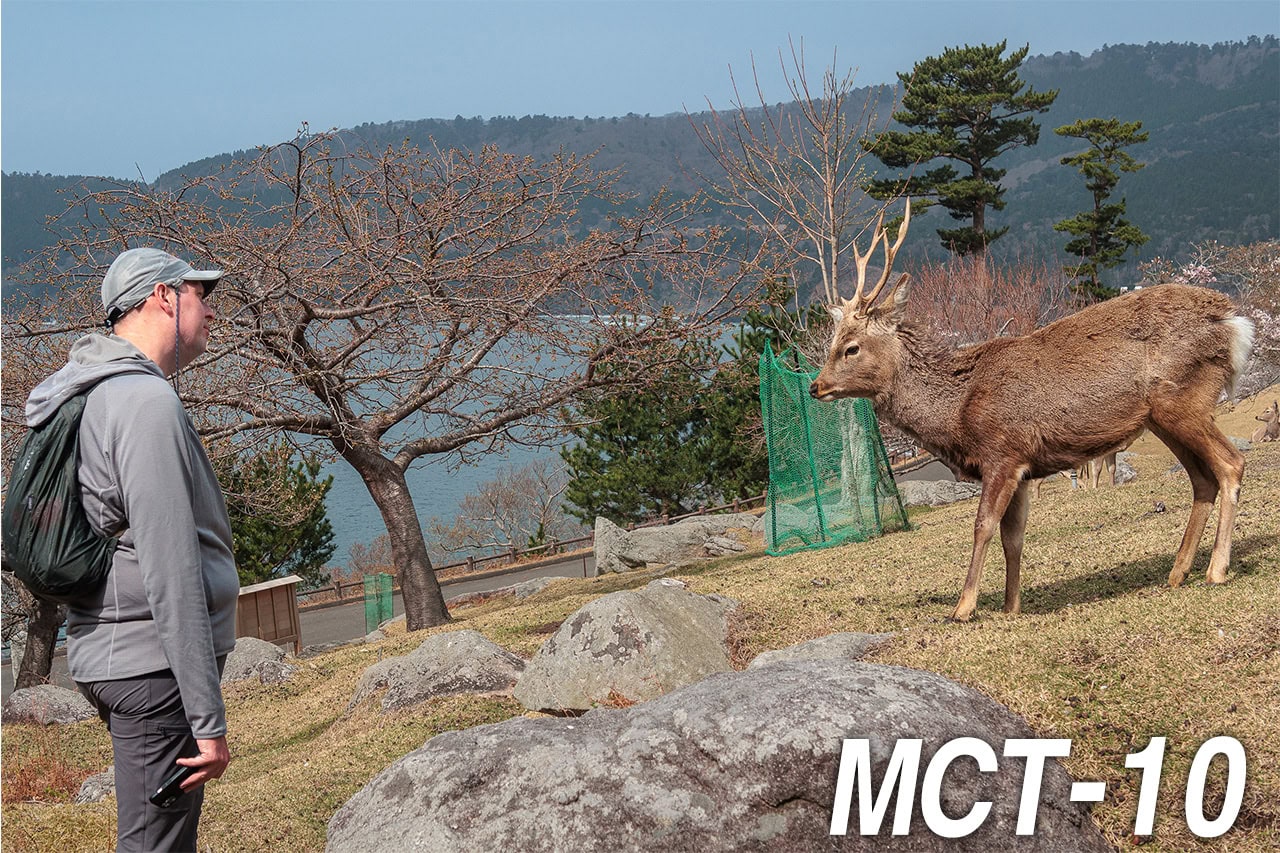
Comments